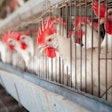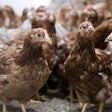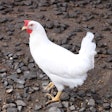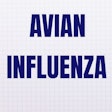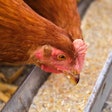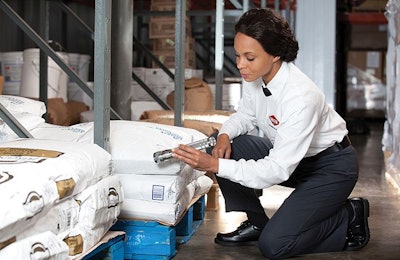
Since the U.S. Food and Drug Administration (FDA) issued the final egg rule regarding prevention of Salmonella Enteritidis 10 years ago, table egg production companies have worked hard to develop and implement pest management programs to reduce the risk of Salmonella contamination.
From the production farm to the processing plant, pests damage facilities, contaminate feed, spread Salmonella and other diseases, and affect product quality. Potential product recalls that affect brand value and incur significant expenses justify a strong commitment to reducing these risks with a preventive pest management program.
Robert Rowland, who works as an independent consultant, has observed some significant changes in the approach of egg production companies regarding pest control since the implementation of the rule.
"Egg producers are taking this issue seriously," he said. "Biosecurity procedures have been put in place that keeps even consultants like me from visiting complexes. Pest control programs that follow these new procedures have been very successful."
Issues before the implementation of the rule
Before the implementation of the rule, some operations treated pest management as a rather simple approach of attempting to control rats, mice, flies and insects, while other farms had sophisticated, proactive programs in place.
Despite the additional investment incurred with costs of pest programs and record-keeping, operations have seen a financial benefit from lower feed waste, less damage and reduced maintenance of facilities and fewer fly nuisance issues.
According to Rowland, companies that had already taken steps to implement a more proactive approach have probably seen fewer savings or, perhaps, even higher costs due to additional requirements of documentation and compliance.
He feels that the entire industry has benefited from the rule as pest control and biosecurity requirements are essential to reduce risks of pests or humans transmitting Salmonella or other diseases such as avian influenza.
Rowland said fly control is different in cage-free housing than conventional systems. In cage-free systems, fly populations may spread throughout a house rather than be concentrated in the manure pit. Also, as birds help control flies, the population may be slightly lower. He stressed that consistent monitoring is important to keep the fly population successfully controlled.
Pest management plan
Chelle Hartzer, technical services manager at Orkin, said: "Pest management sounds easy. You see a pest, kill it and move on. However, an integrated pest management plan requires a much more detailed approach to solving pest problems and, more importantly, preventing infestations. How did the pest get into the facility? We need to identify the food source of the pest. Are environmental conditions right for the pest to become established? Where might they establish?"
Hartzer outlines steps required in an integrated pest management plan for an egg operation that meets the requirements of the FDA's Salmonella Guidance.
- Identify potential threats
- Establish preventive controls
- Monitor for effectiveness
- Make corrective actions as necessary
- Verify solutions are appropriate
- Keep good documentation
There are many threats that need to be evaluated to identify existing or potential problems. Look for evidence of and/or conditions that could lead to pest infestation. Hartzer likes to use a risk-based assessment model to move from a reactive mode of treating when problems are observed and shifts to a preventive mode. This change is accomplished by defining what is the risk, where is the risk and what is the potential impact.
After risks are documented from a thorough review, controls can be put in place. For example, in an egg production building, this must include baiting for rats, mice and insects. Potential entry points are sealed, food sources removed, and traffic patterns interrupted if possible. Egg processing facilities require a different set of controls to manage a different set of pest challenges.
It is important to monitor pest controls such as bait stations, traps and lights to observe their impact. A monitoring schedule should be closely followed to make data gathered relevant for subsequent comparison and analysis.

Each pest station, such as this fly light, should be monitored, with pest activity recorded on a scheduled basis. (Courtesy Orkin)
Documenting quantities of pests at each station makes it possible to analyze where pest activity is located within a facility. Rodent activity is documented with a Rodent Index and fly activity can be measured with a variety of methods.
With this information, it is possible to determine if corrective actions are needed such as moving bait stations, adding more interventions or if a different bait might be required.
As changes are made, then again evaluate the documentation to ensure implemented changes have achieved the desired effect. Continued monitoring and verification ensure the program is working with optimal efficiency.
All documentation needs to be in the same format to optimize long-term analysis. By looking at trends, it is possible to determine year-to-year seasonal impact, product efficacy, and overall program efficacy. Accurate documentation is a good tool to use with potential customers to demonstrate pest control commitment.
Overseeing pest control
In many companies, documentation and internal audits are the responsibility of the quality control department. An integrated pest management program is only as good as those designing and implementing the program.
For companies with multiple production farms, production management is usually given the responsibility of site-specific program design and implementation as pest challenges vary drastically between locations. Vendors and consultants are excellent sources of information and resources when additional input is required.
Pest control services are an option that is effective for some producers. The outside inspection offers another set of eyes that may identify issues that are overlooked by those familiar with a facility. Professional education and experience of service technicians can prove invaluable, especially when new, unfamiliar risks are identified.
Rowland said education offers the greatest opportunity in the future for continued improvement of pest control in the egg industry. He said producers and FDA inspectors have an opportunity to first learn more about pest control methods and persistent issues, such as product rotation. Secondly, they need to work together to create proper expectations and consistency between inspectors to allow the inspection process to be fair and equitable.




